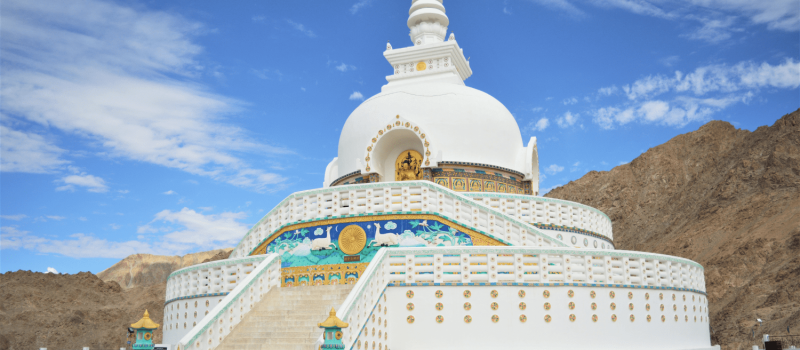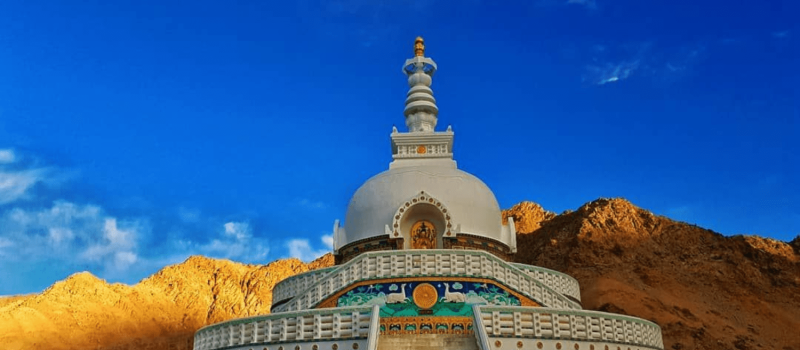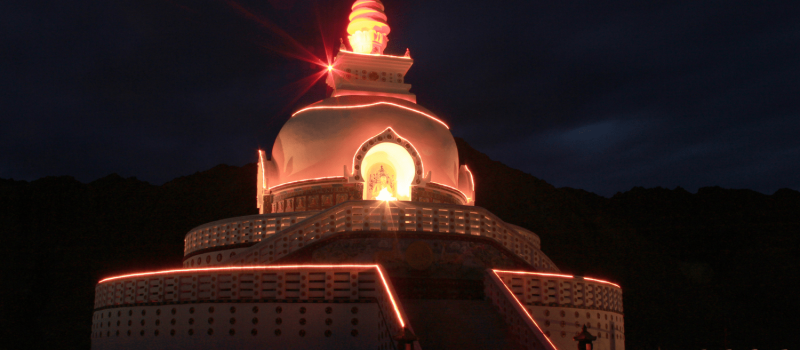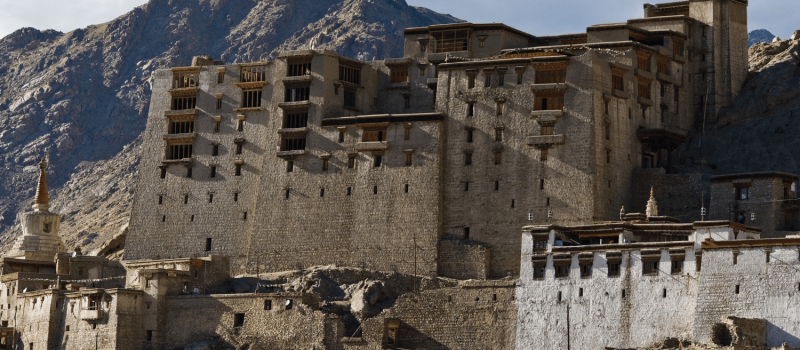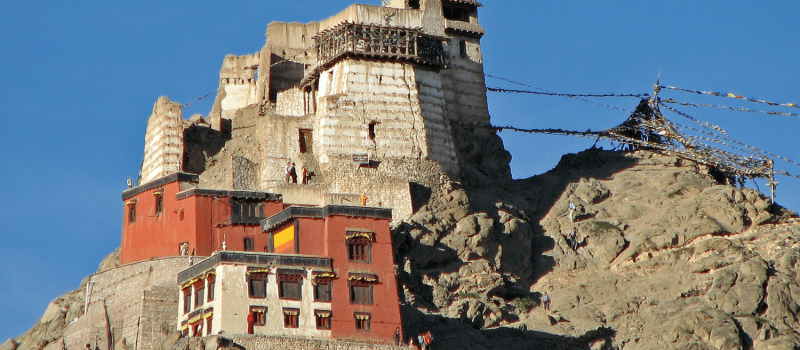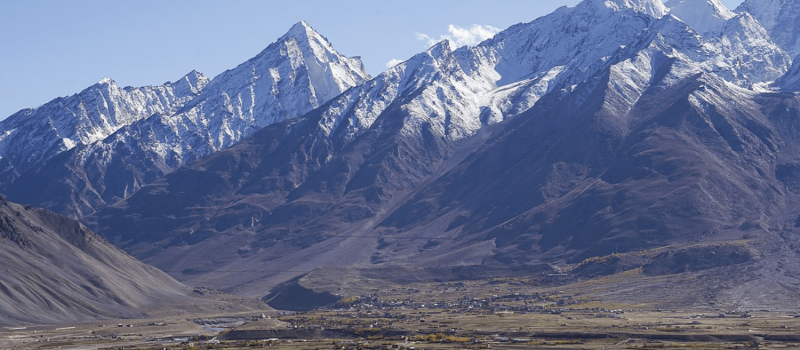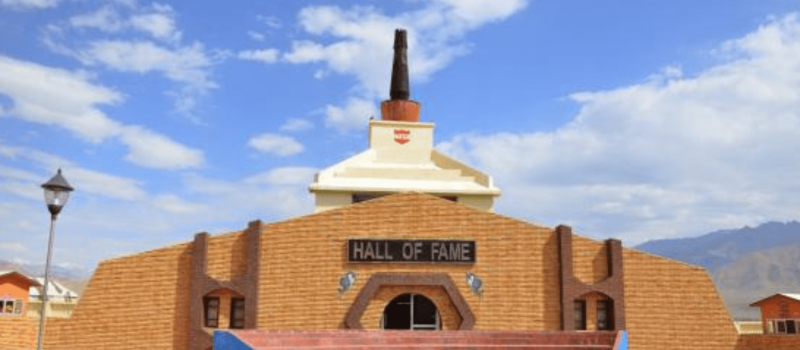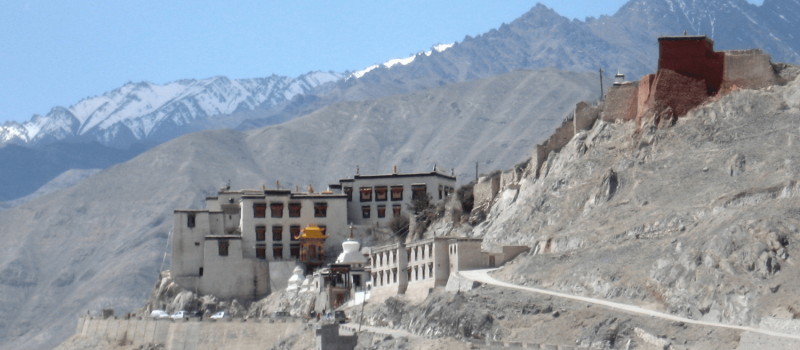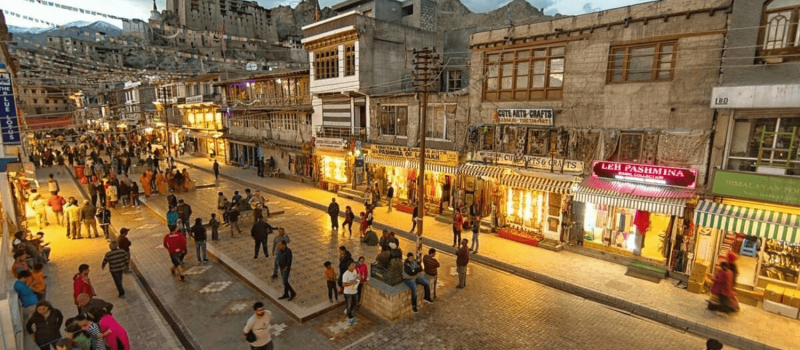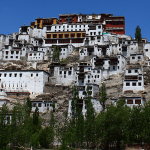Shanti Stupa In Ladakh: The Best Of Ladakh’s Most Visited Attractions
Explore Ladakh, the crown jewel of India’s northern frontiers, on a mesmerising journey with our curated Ladakh tour packages. The Shanti Stupa in Ladakh emerges as a beacon of serenity among the celestial landscapes, capturing the essence of this mystical land.
The Shanti Stupa, one of the most remarkable places to visit in Ladakh, adorns the hilltop of Chanspa, offering an unparalleled view of Leh. This ivory-white dome stands out in the rugged terrain, offering a sense of tranquility that transcends time and space.
The Shanti Stupa in Ladakh stands as a testament to peace and harmony in the midst of this desolate beauty. Built by Japanese Buddhists it is more than a monument; it is a fusion of art and spirituality. It is the embodiment of a timeless heritage that captivates every visitor.
Shanti Stupa’s magnetic allure will take you on an enlightening journey as you marvel at the beautiful artwork, listen to the wind’s whispers, and get lost in the breathtaking vista. So pack your bags and let the enchantment of the Shanti Stupa entice you to Ladakh’s untainted splendour.
History Of Shanti Stupa
The Shanti Stupa, perched elegantly on a hilltop overlooking the sprawling city of Leh, is a radiant testament to peace and spirituality. It is an important part of Ladakh’s historical tapestry and, without a doubt, one of the best places to visit in summer in Ladakh.
The Shanti Stupa began as a tangible dream conceived by Gyomyo Nakamura, a Japanese Buddhist monk, in 1983. This serene monument arose from a noble vision: to promote global peace and prosperity. The project was part of the global Peace Pagoda mission to commemorate 2500 years of Buddhism and promote harmony among people of all faiths.
The Shanti Stupa is more than just a stupa; it is a work of art steeped in history. Its intricate carvings on its walls depict the life and enlightenment of Gautama Buddha and are embellished with traditional Buddhist art. It is a celebration of diversity, echoing Buddha’s teachings of peace and unity. It is a fusion of Japanese style and local craftsmanship.
The Shanti Stupa represents peace and harmony, mirroring Ladakh’s transformation from a harsh, desolate desert to a vibrant spiritual hub. It is more than a building; it is a representation of Buddhist philosophy that has spanned centuries, uniting the people of Ladakh with the essence of love, compassion, and tranquillity.
Things To Do At The Shanti Stupa
There are a plethora of things which travellers can do at the Shanti Stupa, some of the best ones are below, so scroll through and check them out.
Witness a Spectacular Sunrise or Sunset: Shanti Stupa is the ideal canvas for nature’s magnificent art. Its vantage point atop a hill makes it an ideal location for catching an unforgettable sunrise or sunset. As the sun casts an ethereal glow on the Stupa, the moment transforms into a one-of-a-kind spiritual experience.
Experience Serenity Through Meditation: The Shanti Stupa is more than just a tourist attraction; it is a haven of peace. Engage in quiet meditation within its serene setting. The soothing ambiance is complemented by chants and prayers, providing a truly soul-soothing experience.
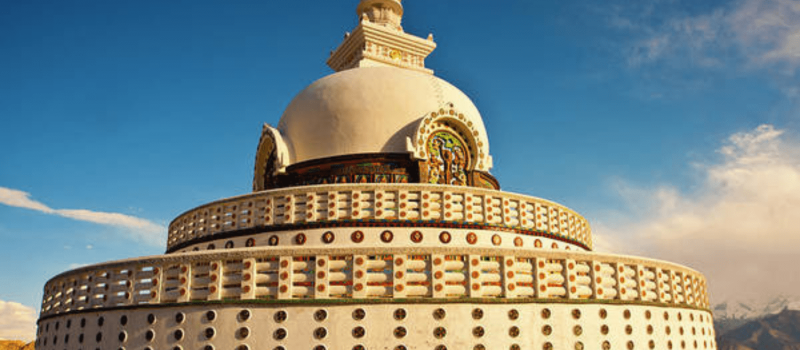
Investigate Art and Architecture: The Shanti Stupa is a work of art that represents the essence of Buddhism. Admire the intricate reliefs and frescoes depicting Buddha’s life and teachings.
Indulge in Photography: With its breathtaking backdrop and architectural beauty, the Stupa is a photographer’s dream. The panoramic view of the snow-capped Himalayas and the city of Leh will provide plenty of opportunities for breathtaking photographs.
Enjoy the Panoramic Views: The Shanti Stupa overlooks Ladakh’s breathtaking landscapes. The panoramic view of Leh, the sprawling Indus Valley, and the snow-capped Zanskar range is truly breathtaking. Ascend the steps to the Stupa’s upper level for an uninterrupted view.
Discover the Shanti Stupa’s History and Significance: Every aspect of the Shanti Stupa has a story to tell. Learning about its construction and religious significance will broaden your understanding and appreciation of this peaceful monument.
Attend a Puja or Prayer Session: If your visit falls on a religious holiday or full moon day, you may be able to attend a Buddhist prayer session. The Shanti Stupa’s melodious chants and spiritual ambiance create a profound experience.
Visit at Night: The Shanti Stupa shimmers under the starlit sky, making a night visit enthralling. The Stupa’s ethereal beauty is enhanced by its illumination against the dark sky.
What Makes It Special

The Shanti Stupa in Ladakh, perched atop the tranquil hills of Leh, is an exceptional blend of spirituality, history, and architectural splendour.
What truly distinguishes it is its universal message of peace, embodied in the name ‘Shanti,’ which means ‘peace.’ The Stupa, with its detailed Buddhist reliefs depicting Buddha’s life events, serves as a symbol of tranquillity among Ladakh’s rugged landscapes.
The breathtaking panoramic views it provides, encompassing the snow-capped Himalayas and the sprawling Leh city add to its allure. Without a doubt, Shanti Stupa is an unforgettable part of Ladakh’s soulful landscape.
Attractions Near The Shanti Stupa
The Shanti Stupa has a plethora of attractions near it, some of them are Leh Palace, Hall Of Fame, and Zanskar Valley, but this is not just it, there are much more of them, continue this blog to know more about them.
Leh Palace
Close to the Shanti Stupa, the 17th-century Leh Palace stands as a testament to Ladakh’s rich architectural heritage. Formerly the royal residence, it now houses a museum showcasing a collection of royal artifacts, paintings, and jewelry. The panoramic view of Leh and the Stok Kangri mountain from the palace rooftop is simply breathtaking.
Namgyal Tsemo Monastery
Established in the 15th century, this monastery, also known as Victory Peak, is another nearby attraction. Housing a three-story high gold statue of Buddha and ancient manuscripts, the monastery offers an intriguing glimpse into Ladakh’s spiritual culture.
Zanskar Valley
A few hours’ drive from Shanti Stupa, the Zanskar Valley is a paradise for adventure lovers and nature enthusiasts. Its rugged terrain and pristine rivers offer an idyllic setting for various activities, including the exhilarating white water rafting in Ladakh.
Hall of Fame
Located on the outskirts of Leh, this museum pays tribute to the brave soldiers of the Indian Army. Weapons, war history, and military and aviation artifacts are among the exhibits. It offers a sobering yet patriotic experience and is a must-see if you’re in the vicinity of the Shanti Stupa.
Spituk Monastery
Spituk Monastery, one of Ladakh’s most famous monasteries, is just a short distance from the Shanti Stupa. This 11th-century monastery offers a profound spiritual experience with its rich collection of ancient masks, iconography, and a massive statue of Kali.
Leh Market
Spituk Monastery, one of Ladakh’s most famous monasteries, is just a short distance from the Shanti Stupa. This 11th-century monastery offers a profound spiritual experience with its rich collection of ancient masks, iconography, and a massive statue of Kali.
Best Time To Visit Shanti Stupa
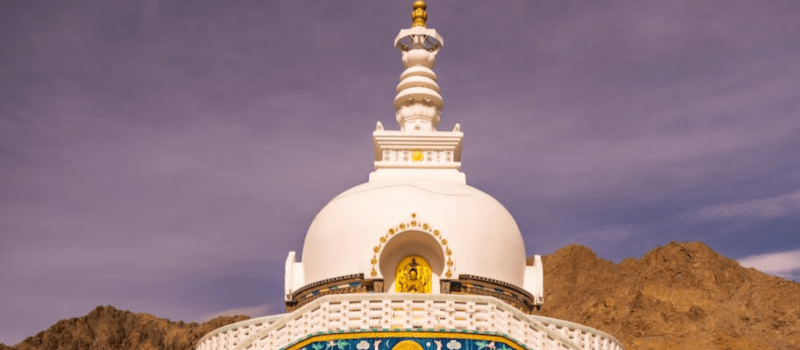
The summer months from April to September are ideal for visiting Ladakh’s iconic Shanti Stupa. This time of year has pleasant weather making it easier to explore the surroundings and climb the steps to the Stupa.
The clear skies and pleasant temperatures allow for spectacular sunrise and sunset views, adding to the ethereal experience.
To avoid the midday heat, visit early in the morning or late in the afternoon. During this time embrace the tranquillity of Shanti Stupa in Ladakh by immersing yourself in its spiritual aura and admiring the mesmerising vistas.
As we conclude this journey through the serene, spiritual realms of the Shanti Stupa in Ladakh, we hope it kindled your desire to explore this timeless gem. Shanti Stupa, with its panoramic vistas, historical significance, and spiritual resonance, truly encapsulates the soul of Ladakh.
Embarking on this experience is more than just a travel escapade; it is a spiritual journey that fosters peace and tranquility.
So, when the mountains call, let the ethereal charm of Shanti Stupa guide you to a realm where serenity meets grandeur, and history intertwines with spirituality.
Frequently Asked Questions About Shanti Stupa In Ladakh
1. What is Shanti Stupa in Ladakh?
The Shanti Stupa in Ladakh is a white-domed Buddhist monument, located atop a hill in Chanspa, Leh. Symbolizing peace and commemorating 2500 years of Buddhism, it offers panoramic views of the surrounding landscape and is a prominent attraction in Ladakh.
2. How do I reach Shanti Stupa in Ladakh?
Shanti Stupa is located approximately 5 km from Leh city center in Ladakh. You can reach it by taxi, bike, or trekking. There are well-paved roads leading up to the monument, or for the adventurous, a steep flight of 500 steps.
3. What is the best time to visit Shanti Stupa in Ladakh?
The best time to visit Shanti Stupa in Ladakh is during the summer months from April to September when the weather is pleasant. Early morning and late afternoon are ideal times to catch the mesmerizing sunrise and sunset views over the Leh cityscape.
4. Are there any entry fees or restrictions for visiting Shanti Stupa in Ladakh?
No, there are no entry fees or restrictions for visiting Shanti Stupa in Ladakh.



